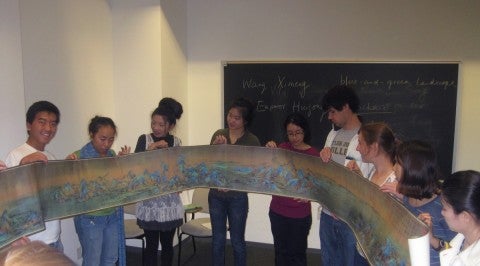"Once Upon a Time There Was Oil: Extractivism, Intensified Modernity and Oil Districts in Caracas, Venezuela"
“Venezuela can be considered the first ex-modern country.” This phrase refers to the fiction of modernity adopted by a country that became a dystopia – a country formed by the "magma" that during the "developmentalist" decades remained hidden, "crushed" by said fiction, but subsequently, emerged engulfing and "devouring" everything in its path.
Despite being located far from the oil production centers, Caracas received the greatest impact of the economic and cultural oil boom. It was transformed into what Francis Violich called an "instant metropolis." In the 1940s and 1950s, the oil multinationals – after almost forty years performing an extractivist and nomadic occupation scheme in Venezuela – were forced to reformulate their status as well as the nature of its ties to the country. This led to the construction of modern Headquarters Buildings in the capital city and the development of what we have called Caracas Oil Districts.
The concept of "Oil District" allows us to visualize the various areas of the city in which the dynamics and interests associated with the oil companies were developed. Based on a common physical matrix and a new "lifestyle," these dynamics gave rise to a new spatial and urban segregation process, identified with the notion of the “camp” and the suburb. These new áreas were designed to counteract an anachronistic “otherness” that was not compatible with the “modernizing” eagerness that these oil districts embodied. These “Oil districts” also represented a form of occupation in which the Headquarters Buildings became the centers where city life and work converged. These “Oil districts” were moving on the map of the city as the oil corporations moved, but they all shared an imaginary of “intensification of modernity” based on a unique level of equipment and services in contrast to other urban areas of the city. After some transnational companies relocated and "abandoned" the Oil Districts, in the 1950s and 1960s, the Headquarters Buildings were converted into centers of police repression and torture, or military facilities; perverse mutations that linked the "corporate schemes" with terrible connotations associated with power and authoritarianism.
=======
Henry Vicente Garrido received his Doctorate in Architecture and Heritage from the Polytechnic University of Madrid (Excellent Cum Laude, 2014), Spain. He received his Bachelor in Architecture (1988) and a Master in Latin American Literature (Outstanding Mention and Publication Mention, 1994) from the Simón Bolívar University (USB), Caracas, Venezuela. He is a Professor of Architectural History and Theory at USB and from 2012 to 2015 he was the Dean of the USB School of Architecture. He has been visiting professor at University of the Americas, Mexico; City School (Escola da Cidade), Brazil; University of Coruña, Spain; and Francisco de Paula Santander University, Colombia, and at several Venezuelan universities. He has been Curator of international exhibitions such as "Arquitecturas desplazadas. Arquitecturas del exilio español" ("Displaced Architectures. Architectures of Spanish Exile") in Madrid, 2007; and Curator in three editions of the Ibero-American Biennial of Architecture and Urbanism (VII BIAU-Medellín 2010, VIII BIAU-Cádiz 2012 and IX BIAU-Rosario 2014). Through his academic career, Professor Vicente has served various leadership and advisory roles, including the Rockefeller Foundation Bellagio Center Residency Program’s Jury (2018). Among his recognitions are: the CICA Julius Posener Award, which he received from the International Committee of Architectural Critics in Turin, Italy, in 2008, and the Andrés Bello Prize for Research in Social Sciences from the USB in 1999, 2008 and 2016.

